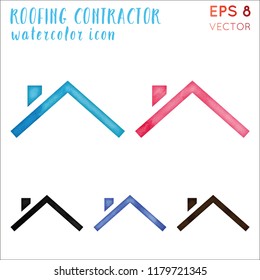Comparing Interior Vs. Outside Paint: Secret Distinctions And Utilizes
Comparing Interior Vs. Outside Paint: Secret Distinctions And Utilizes
Blog Article
Content By-Reimer Bernstein
When you're picking between exterior and interior paint, it's vital to understand their essential distinctions that influence both efficiency and looks. Inside paints are crafted for lower VOC levels and smoother finishes, making them suitable for indoor areas, while exterior paints are designed to withstand rough weather conditions and UV direct exposure. Each kind offers an unique objective, yet knowing when to utilize one over the various other can considerably affect your task's result. So, what commercial interior painter should you consider when making your choice?
Structure and Formulation
When selecting in between interior and exterior paint, recognizing their composition and formulation is critical. Interior paints generally have a lower amount of unstable natural compounds (VOCs), making them much safer for interior air high quality. You'll observe they often have a smoother surface, which improves their capacity to withstand spots and allows for less complicated cleaning. They're designed to stand up to the roughness of interior settings, including differing humidity levels and temperature changes.
On the other hand, outside paints are developed to sustain harsher problems. They typically have greater degrees of pigments and additives to resist fading from UV rays, in addition to to prevent mildew and mold development. Their composition includes extra binders and materials, which offer far better attachment to surfaces revealed to the components. This ensures the paint can hold up against rain, snow, and rising and fall temperatures without peeling off or breaking.
Performance and Longevity
Reviewing performance and durability is crucial when picking between exterior and interior paint. Interior paint is designed for surface areas that experience much less deterioration. It commonly withstands fading and scuffing, making it perfect for living areas and bedrooms. However, it may not stand up well in high-moisture areas like bathroom and kitchens without proper formula.
On the other hand, outside paint encounters harsher conditions. It's crafted to hold up against UV rays, rainfall, and temperature level changes. This kind of paint often includes ingredients that stop mold and mildew development, making certain durability in different climates. When you utilize exterior paint, you can expect it to last numerous years longer than interior paint, provided it's applied properly.
One more key distinction depends on the finish choices. Inside paints commonly have a variety of coatings for visual appeal, while outside paints prioritize toughness over luster. If you're looking for something that can manage the elements, exterior paint is your best bet.
In https://www.consumerreports.org/home-garden/painting/ideal-outdoor-temperature-range-exterior-paint-a5147059904/ , if you're concentrated on indoor appearances with much less issue for extreme conditions, interior paint may be appropriate. Ultimately, your selection ought to align with the specific demands of the atmosphere.
Aesthetic Considerations
A fresh layer of paint can change a space, yet aesthetic considerations play a vital duty in your selection in between interior and exterior choices. When you're selecting paint, think about the state of mind you want to develop. Interior paint allows you to check out a bigger range of shades and surfaces, allowing you to share your individual design and boost your home's ambiance. Whether you opt for soft pastels or strong colors, the ideal indoor paint can make your rooms really feel comfy, vibrant, or peaceful.
On the other hand, outside paint needs to align with your home's architecture and the surrounding atmosphere. Here, you're not just making a style declaration; you're likewise considering aesthetic appeal. Choosing colors that integrate with your community can improve your home's worth and visual charm. Remember that exterior paint is likewise based on fading and climate changes, so selecting a timeless color can save you from frequent repainting.
Eventually, take into consideration how each alternative fits your vision. By aligning your paint option with your desired aesthetic, you can produce rooms that reflect your personality while preserving capability.
Conclusion
When it involves choosing paint, comprehending the vital distinctions between exterior and interior options is necessary. Interior paints concentrate on visual appeals and low VOCs, making them best for improving your indoor rooms. On the other hand, outside paints are created for toughness and climate resistance, protecting your home from the components. By considering your details requirements and the setting, you can confidently pick the right paint to achieve the appearance and durability you want for your area.
